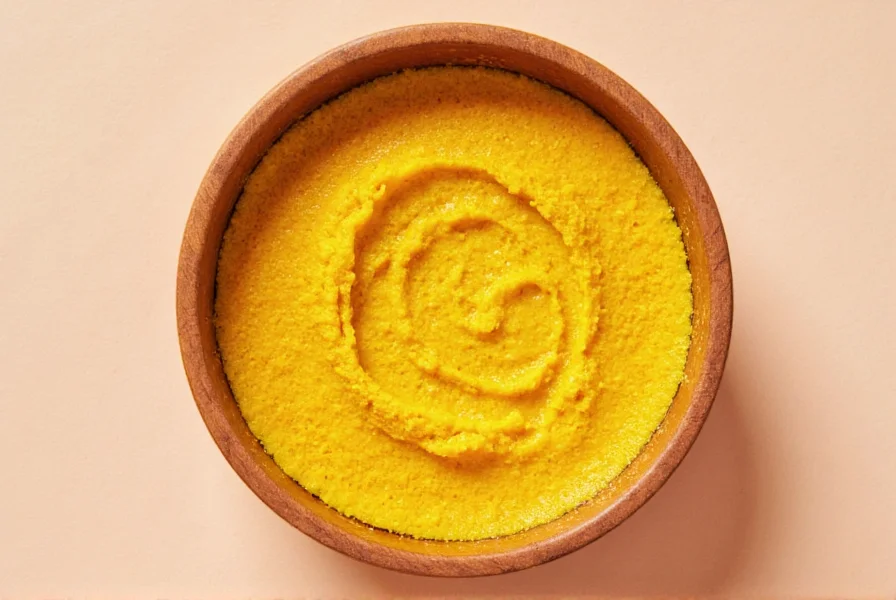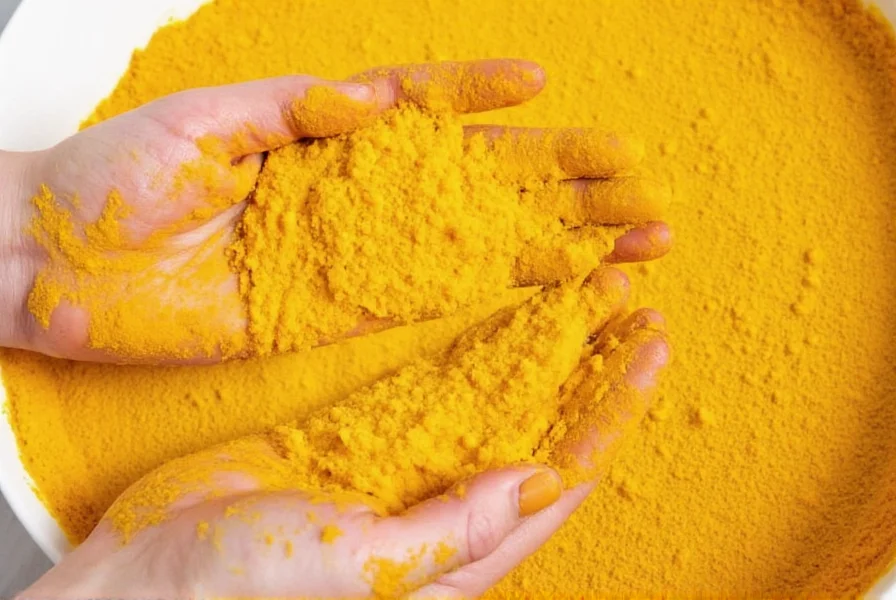A vibrant golden spice celebrated in Ayurvedic traditions, turmeric has gained global recognition in skincare for its potent anti-inflammatory and antioxidant properties. When formulated into a scrub, this ancient ingredient delivers dual action: physical exfoliation from the scrub base combined with turmeric's therapeutic benefits. Understanding how to properly incorporate turmeric scrub into your routine maximizes benefits while minimizing potential drawbacks like temporary staining.
The Science Behind Turmeric's Skincare Benefits
Curcumin, turmeric's active compound, demonstrates significant anti-inflammatory effects that help calm irritated skin and reduce redness. Research published in Phytotherapy Research confirms curcumin's ability to inhibit inflammatory pathways at the molecular level. When applied topically through a scrub formulation, these properties become accessible for addressing common skin concerns without systemic absorption.
Natural exfoliants in turmeric scrubs—whether sugar, salt, or ground oats—remove dead skin cells while turmeric's antioxidants combat free radical damage. This dual-action approach makes homemade turmeric face scrub for glowing skin particularly effective for improving skin texture and radiance. Unlike chemical exfoliants that may cause sensitivity, physical turmeric scrubs provide immediate visible results with minimal irritation when used correctly.
Types of Turmeric Scrubs and Their Applications
Different formulations serve specific skincare needs. Understanding which turmeric and honey scrub benefits match your skin type ensures optimal results:
| Scrub Type | Best For | Frequency |
|---|---|---|
| Turmeric + Sugar | Normal to oily skin | 1-2 times weekly |
| Turmeric + Oats | Sensitive or dry skin | Once weekly |
| Turmeric + Coffee Grounds | Body exfoliation | 1-2 times weekly |
| Turmeric + Yogurt | Brightening treatment | Once weekly |
For those wondering how to use turmeric scrub for acne, the anti-inflammatory properties help reduce active breakouts while gentle exfoliation prevents clogged pores. However, avoid using on open wounds or severe inflammatory acne, as physical exfoliation may exacerbate irritation.

Creating an Effective Turmeric Scrub at Home
Formulating your own DIY turmeric face scrub for dark spots ensures control over ingredients and freshness. The basic ratio maintains effectiveness while minimizing staining risk:
- 1 teaspoon turmeric powder (sifted to remove impurities)
- 2 tablespoons base exfoliant (sugar for normal/oily skin, oats for sensitive skin)
- 1 tablespoon carrier (honey, yogurt, or milk)
- 5-10 drops of liquid (water, rosewater, or aloe vera gel)
Mix ingredients in a non-reactive bowl until forming a spreadable paste. Apply to damp skin using gentle circular motions for 30-60 seconds, avoiding the eye area. Rinse thoroughly with lukewarm water, followed by a splash of cold water to close pores. Follow with moisturizer to maintain hydration balance.
Managing Potential Staining and Sensitivity
The most common concern—does turmeric scrub stain skin—has a straightforward answer: temporary yellow tinting may occur, particularly on fair complexions, but typically fades within hours. Minimize staining by:
- Using no more than 1 teaspoon turmeric per application
- Rinsing thoroughly with a washcloth
- Following with a gentle cleanser
- Avoiding application before important events
Always conduct a patch test 24 hours before full facial application. Apply a small amount behind your ear or on your inner arm. If redness, itching, or burning occurs, discontinue use. Those with known sensitivity to plants in the Zingiberaceae family (like ginger) should exercise caution with turmeric scrub for sensitive skin.
Who Should Avoid Turmeric Scrubs
While generally safe, certain individuals should avoid turmeric scrubs or consult a dermatologist first:
- People with known turmeric allergies
- Those using prescription acne medications (retinoids, antibiotics)
- Individuals with broken skin or active eczema flare-ups
- People scheduled for cosmetic procedures within two weeks
For those concerned about turmeric scrub side effects on face, remember that moderation is key. Over-exfoliation—more than twice weekly—can compromise the skin barrier regardless of the product used. Listen to your skin's response and adjust frequency accordingly.
Maximizing Results Through Proper Usage
For optimal outcomes with your organic turmeric scrub for skin brightening, follow these evidence-based recommendations:
- Use at night to allow skin recovery time before sun exposure
- Always apply broad-spectrum SPF 30+ the following morning
- Store homemade scrubs in airtight containers for no longer than 3 days
- Combine with consistent skincare routine for cumulative benefits
Noticeable improvements in skin texture and brightness typically appear after 4-6 weeks of consistent, proper use. Patience proves essential, as natural skincare solutions work gradually compared to clinical treatments.
How long should I leave turmeric scrub on my face?
Leave turmeric scrub on your face for no longer than 5-7 minutes. Extended contact increases staining risk without providing additional benefits. Gently massage for 30-60 seconds during application, then rinse thoroughly with lukewarm water.
Can I use turmeric scrub every day?
No, daily use of turmeric scrub is not recommended. Most skin types benefit from using turmeric scrub only 1-2 times weekly. Over-exfoliation can compromise your skin barrier, leading to increased sensitivity and irritation. Allow at least 3-4 days between applications for optimal skin recovery.
Does turmeric scrub help with dark spots?
Yes, regular use of turmeric scrub can help fade dark spots over time. Turmeric's anti-inflammatory properties and ability to inhibit melanin production contribute to gradual improvement in hyperpigmentation. Consistent use for 8-12 weeks typically shows visible results, though individual outcomes vary based on skin type and spot severity.
What should I do if turmeric scrub stains my skin?
If turmeric scrub leaves a yellow tint on your skin, gently cleanse with a mild soap and warm water. Follow with a paste of baking soda and water applied for 1-2 minutes before rinsing. The stain typically fades completely within 24 hours. To prevent future staining, reduce turmeric quantity in your scrub and rinse thoroughly after each use.
Can I use turmeric scrub on sensitive skin?
Yes, but with modifications. For sensitive skin, use a gentler base like colloidal oats instead of sugar or salt, reduce turmeric to 1/4 teaspoon, and limit use to once weekly. Always perform a patch test 24 hours before facial application. Consider adding soothing ingredients like aloe vera or chamomile tea to your turmeric scrub for sensitive skin formulation.











 浙公网安备
33010002000092号
浙公网安备
33010002000092号 浙B2-20120091-4
浙B2-20120091-4